How Gender-Based Violence Affects Conservation
As we strive to protect the planet and build a brighter future for all people, we also need to contend with gender inequality & gender-based violence.
Content note: This article discusses gender-based violence, including domestic abuse.
We use the term “women” to include cisgender women, transgender women, femme/feminine-identifying, genderqueer and non-binary individuals.
We also acknowledge that non-binary individuals face even greater challenges than cisgender women in societies and systems structured around binary gender identities.
Gender inequality is holding us back from enduring conservation results. For example, despite comprising more than half the world’s population, women are routinely excluded from decisions around natural resource management. We need women’s participation, perspectives and leadership.
It is critical that we address conservation issues within the existing systems of inequality that permeate the places where we live and work. Our research has shown that unless we take care, conservation programs can put people at risk. One of those risks is gender-based violence.
What Is Gender-Based Violence?
Gender-based violence (GBV) is any harmful threat or act directed at a person or group of people based on their biological sex, their gender identity or expression, their sexual orientation or the differing ideas they may hold about masculinity or femininity.
While GBV can involve people of any gender, it is mostly done by men against women and girls.
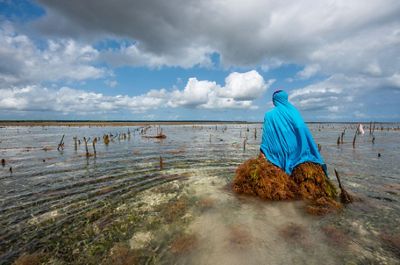
“Gender-based violence is rooted in inequality, and inequality is everywhere,” explains Robyn James, gender and equity director for TNC in Asia Pacific. Globally, one in three women experience some form of physical or sexual violence in their lifetime (this figure does not include sexual harassment). “That means GBV is everywhere, too. Conservation programs that ignore existing gender inequality and fail to understand gender and social norms in an area can worsen conditions that cause harm—especially for women and girls.”
How Does GBV Relate to Conservation?
Training on gender and gender-based violence and ways to respond appropriately.
Access the TrainingWhat does gender-based violence have to do with conservation?
As a science-based organization and one of the largest conservation organizations, The Nature Conservancy focuses on strategies that can address biodiversity loss and climate change for the long term. And the research shows that when we more intentionally include women in natural resource management, we can improve the long-term success of conservation and climate work.
For example, a study across forest users in Indonesia, Peru and Tanzania showed that when women comprised 50% of decision-making groups, more trees were conserved and payments for ecosystem services were distributed more fairly.
However, elevating the role of women and increasing their decision-making power poses a challenge to existing power structures or deeply entrenched social norms—norms that most often benefit men.
“Men in my country are often not comfortable with women being in charge, earning their own money or having important roles in the community,” says Ruth Konia, country director for TNC in Papua New Guinea. “When we push women to get involved with conservation, we are challenging how things have always been done. That comes with risk.”
How Conservation Responds to Gender-Based Violence
Challenging social norms and power can come with risk. We must act with care.
Learn the linksWomen in Papua New Guinea depend on healthy mangrove forests for daily life, but these ecosystems are under constant threat from development, as well as destruction from men and boys who devalue women’s work in the mangroves. Through Mangrove Market Meri, Konia is encouraging and supporting women to have more control over the natural resources they depend on for food and income—and educating men and families that this work is good for everyone.
3 Ways Gender-Based Violence Is Linked to Conservation
Increasingly, the conservation sector is investing in research to better understand the links between gender-based violence, conservation and environmental impacts. Research and case studies from related sectors, such as humanitarian aid and development, are informing tools and resources that help conservationists on the ground mitigate and respond to GBV.

Here are some examples of links between conservation and gender-based violence and how organizations like TNC can address them.
1. Climate change makes gender-based violence worse
Impacts from climate change like drought, sea-level rise, resource scarcity and extreme weather events can have devastating impacts on communities. These burdens are frequently worse for women and girls, who are often more directly dependent on natural resources for income and caretaking responsibilities.
For example:
- In times of drought, women and girls may be forced to walk farther to collect potable water or spend longer time in water queues, increasing their exposure to sexual assault and harassment and decreasing the time they can spend studying or earning an income.
- Resource scarcity driven by climate change can increase the likelihood of sexual exploitation of women and girls, including transactional or coerced sex to provide for their families.
- In times of agriculture shocks, storms and other climate impacts, communities can lose access to productive natural resources and may not be able to meet basic needs. In some cases, families may resort to dire and inequitable practices, such as child marriage.
- Women are also more likely than men to die in many types of natural disasters—which become more frequent and intense due to climate change. In one example, 90% of deaths from the 2014 Solomon Islands flash floods were women.
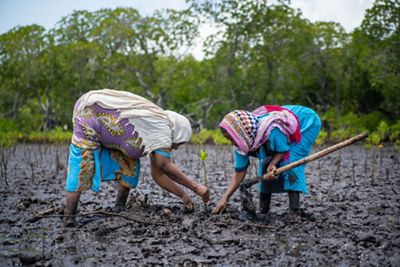
Displacement from weather events can increase exposure to GBV in transit centers, refugee camps and shelters. In the United States, we’ve seen how back-to-back weather emergencies, compounded by the global COVID-19 pandemic, create a “tipping point” for gender-based violence while also interrupting the availability of support services.
2. Gender-based violence affects conservation program design
An important part of measuring conservation impact is taking a closer look at who benefits and who bears the costs. It also means taking care to avoid unintended consequences that reinforce inequality, marginalization and harm.
“Gender mainstreaming checklists and gender quotas have helped put gender on the table—but they are insufficient on their own to really drive progress,” explains James, who has spent the last 25 years working on conservation in Africa, Asia, Australia and the Pacific Islands. “If we increase women’s participation in a fisheries program, but they are still forced to turn wages over to their husbands and maintain the same level of domestic chores, that doesn’t advance gender equity. It hurts it.”
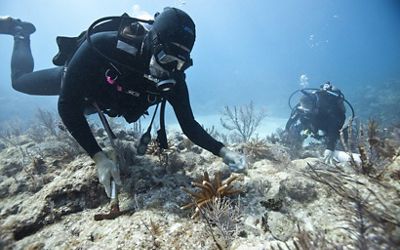
Before developing project plans, conservationists should conduct a detailed gender analysis to better understand existing drivers of GBV and how natural resource use differs across genders. Gender analyses can also be developed for existing programs to refine strategies and ensure safe, equitable benefits for the whole community.
In Papua New Guinea, Konia explained that it has been important to move slowly and include men in conversations around gender equity in developing Mangrove Market Meri. “If we push too hard, women are at risk of backlash. Gender-based violence is tolerated and normalized. That’s why we’re doing trainings around gender equity with both men and women, including whole-family financial planning, alongside traditional conservation efforts.”

Maria Cristina De La Paz, a TNC watershed conservation coordinator, recalled a similar pattern in the Ecuadorian Amazon. TNC is partnering with the Pueblo Kichwa de Rukullakta (PKR) to protect freshwater biodiversity, support ecotourism, advance fisheries management and identify sustainable production alternatives.
“We first approached local women in Rukullakta to map gender roles and collect primary data around natural resource use and domestic labor—but we quickly learned just how prevalent and normalized gender-based violence is in the area,” De La Paz explained. Women were afraid to speak out due to judgment from society.
As part of the conservation initiative in PKR, TNC is providing governance support and helping the community build a constitution that regulates the management of natural resources. Initially, the team hoped to ban violence against women in the constitution. But after discussions with GBV specialists and local leaders, they realized a safer and more successful approach would be to include language that promotes gender equity more generally and a vision of safety for all, including women. It also focuses on applying Indigenous justice approaches, rather than a Western “law and order” tack.
“Gender-based violence is common and normalized. An outright ban against GBV could put women at increased risk, alienate or anger men and result in broken trust all around,” said De La Paz. “We know that laws banning gender-based violence aren’t effective on their own, especially when there is a lack of resources or support services for victims in the community.” With the support of other local organizations working in PKR, the team has also identified training opportunities on violence, family planning and women’s empowerment.
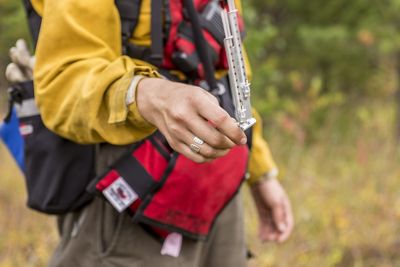
3. Environmental and conservation organizations experience gender-based violence, too
Gender-based violence is prevalent in all societies, which means it affects our own institutions and colleagues, including at The Nature Conservancy. “It’s a lot easier to point to another country’s gender gaps than to hold the mirror up to our own countries and workplaces. This is a problem everywhere—in every country and every institution. We can’t ‘other’ the issue of gender-based violence,” says James.
GBV in the U.S.
In the United States alone, more than 21% of women and 2% of men have been raped at some time in their lives. Statistics about sexual violence, and gender-based violence more broadly, vary based on the definitions used to describe these violations.
Staff at environmental organizations also experience gender-based violence and harassment in the workplace. “There is a lot of bias against women doing fieldwork in conservation,” explains Cynthia Nakozoete, conservation practitioner for TNC in the Solomon Islands. “I love working in the field and helping women get more involved in conservation, but it means we tolerate sexism such as sexist jokes. I’ve seen women’s requests get ignored when men’s are prioritized. And it’s not safe for women to walk alone at night to do turtle monitoring. These barriers can hold us back, and it’s not always safe to speak out in the moment.”
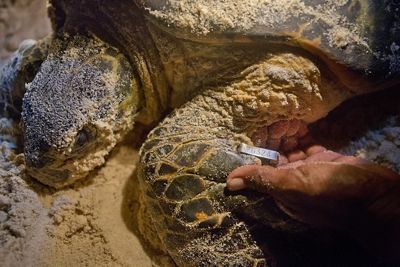
Staff at nonprofits that depend on philanthropy have also experienced harassment from donors, who are in a position of power. One survey showed that one in four female fundraisers has experienced sexual harassment on the job.
How to Support Survivors of Gender-Based Violence
Staff at conservation organizations should be prepared to respond to disclosure of gender-based violence in a survivor-centered, trauma-informed way.
“It’s great to see the conservation sector starting to address GBV in our programs, but we need to remember to tend to the individual person, too,” explained Meg Bresnahan, former associate director of communications and strategy for gender and equity for TNC in Asia Pacific. She is a volunteer on the National Sexual Assault Hotline and helped create guidelines on what to say when someone discloses an experience of GBV.
What do you say when someone discloses GBV?
Learn how to take a trauma-informed approach to supporting survivors with this guide.
Get the guide“It can be so tempting to want to ‘fix’ the problem, like helping someone leave an abusive home. But without proper training, you could put that person in increased danger,” says Bresnahan. “Instead, focus on validating what they shared with you, pointing out their strengths and above all remind them they are not alone.”
As the conservation sector strives to take a more holistic approach to protecting the planet and building a brighter future for all people, we also need to contend with existing inequalities. Gender inequality and gender-based violence impacts our conservation efforts and our own staff and communities.
Investing in gender equity in conservation is challenging, slow work—especially as we push social norms that have restricted women’s access to money and decision-making. Yet if we choose to ignore it, our conservation work will primarily benefit those who are more privileged, not those who need it the most.
In the process of choosing media for this article, we have selected a broad range of images of women and men from around the world to demonstrate the pervasive nature of gender-based violence. None of the photos represent the portrayal, disclosure or survival of violence.
U.S. Hotlines for Assault and Violence
- The U.S. National Sexual Assault Hotline is free, confidential, 24/7 and available in English and Spanish.
- In the U.S., you can call, text or chat the Domestic Violence Hotline confidentially for free, 24/7.
Online Resources
- Conservation and natural resource management: where are all the women?
- Facts and figures: Ending violence against women
- GBV and Conservation Training
- Gender quotas increase the equality and effectiveness of climate policy interventions
- How Conservation Responds to Gender-Based Violence
- Gender-Based Violence and Environment Linkages
- Gender Analysis Guide
- U.S. National Sexual Assault Hotline
- U.S. Domestic Violence Hotline
Global Insights
Check out our latest thinking and real-world solutions to some of the most complex challenges facing people and the planet today.




